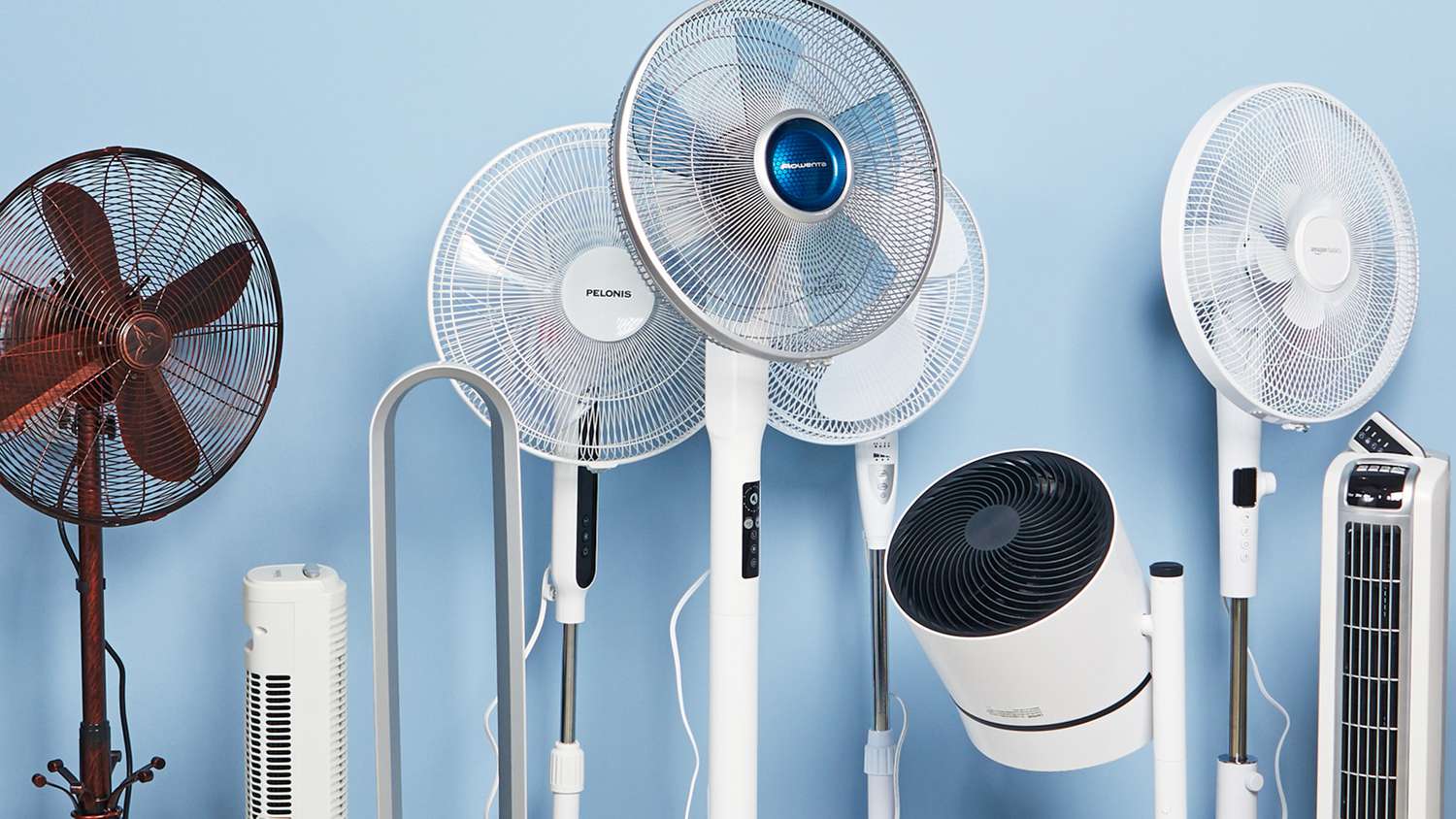The Ultimate Guide to Fans in the USA: Types, Technology, and Buying Guide (2024)
Fans are essential appliances in American homes, offices, and commercial spaces. With rising temperatures and energy costs, choosing the right fan can improve comfort while saving money. This comprehensive guide covers everything you need to know about fans in the U.S., including types, energy efficiency, smart features, and how to select the best model for your needs.

Section 1: The Evolution of Fans in America
Fans have transformed significantly since their introduction to the U.S. market:
1882: Schuyler Skaats Wheeler invents the first electric fan in America.
Early 1900s: Ceiling fans gain popularity in Southern states.
1950s-70s: Window and box fans become household staples.
2000s: Introduction of energy-efficient DC motor fans.
2010s-Present: Smart fans with Wi-Fi, voice control, and bladeless designs dominate the market.
Section 2: Types of Fans Available in the U.S.
1. Ceiling Fans
Best for: Living rooms, bedrooms, porches
Top U.S. Brands: Hunter, Casablanca, Minka-Aire
Pros: Energy Star-rated options available, improves HVAC efficiency
Cons: Requires professional installation
2. Pedestal & Tower Fans
Best for: Bedrooms, offices, apartments
Top Brands: Lasko, Honeywell, Dyson
Pros: Portable, adjustable height, oscillating options
Cons: Can be noisy at high speeds
3. Window & Box Fans
Best for: Quick room cooling, ventilation
Top Brands: Bionaire, Holmes
Pros: Affordable, easy to install
Cons: Limited to window spaces
4. Smart Fans
Best for: Tech-savvy households
Top Brands: Haiku, Big Ass Fans, Dyson
Pros: Alexa/Google Home compatible, app control
Cons: Higher price point
5. Industrial & High-Velocity Fans
Best for: Warehouses, garages, workshops
Top Brands: Vornado, Air King
Pros: Powerful airflow for large spaces
Cons: Loud, high energy use
Section 3: Energy Efficiency & Cost Savings
U.S. Energy Standards
ENERGY STAR Certification: Look for this label for maximum efficiency.
DC Motor Fans: Use 70% less energy than traditional AC motors.
Estimated Annual Costs (8 hrs/day, $0.15/kWh)
| Fan Type | Wattage | Annual Cost |
|---|---|---|
| Ceiling Fan | 15-75W | $8-$30 |
| Pedestal Fan | 40-100W | $18-$44 |
| Smart Fan | 20-50W | $9-$22 |
| Industrial Fan | 100-300W | $44-$131 |
Tip: Using fans with your AC can raise thermostat by 4°F, cutting cooling costs by 30%.
Section 4: How to Choose the Right Fan for Your Home
1. Consider Your Climate
Hot/Humid (South): High-velocity ceiling fans
Dry Heat (Southwest): Evaporative cooler fans
Mild (Pacific NW): Low-profile ceiling fans
2. Room Size Guide
| Room Size | Recommended Fan |
|---|---|
| <100 sq ft | Table fan |
| 100-200 sq ft | 42"-48" ceiling fan |
| 200-400 sq ft | 52"-56" ceiling fan |
| >400 sq ft | Industrial fan |
3. Noise Levels (dB)
Library-quiet (<40 dB): Dyson, Haiku
Moderate (40-60 dB): Most ceiling fans
Loud (>60 dB): Shop fans
4. Price Ranges
Budget ($20-$100): Lasko, Honeywell
Mid-Range ($100-$300): Hunter, Casablanca
Premium ($300+): Dyson, Big Ass Fans
Section 5: Maintenance & Safety
Cleaning Your Fan
Unplug/turn off power
Dust blades with microfiber cloth
Vacuum motor housing
Tighten any loose screws
Safety Tips
⚠ Never use extension cords with high-wattage fans
⚠ Keep 7+ feet clearance from ceilings for optimal airflow
⚠ Check for UL/ETL safety certification
Section 6: Future of Fan Technology
AI Climate Control: Fans that sync with smart thermostats
Air Purifying Fans: With HEPA filters (already available from Dyson)
Solar-Powered Outdoor Fans: Emerging technology
Conclusion
For most American homes, an ENERGY STAR ceiling fan offers the best combination of cooling power and efficiency. Smart fans provide convenience for tech-enabled homes, while industrial fans serve specialized needs. Always consider your room size, climate, and noise preferences when selecting a fan.
Where to Buy: Home Depot, Lowe's, Amazon, and direct from manufacturer websites often offer the best selections and prices.
Discussion (20)
Whether to use credit cards or cash is a widely talked-about topic in today's fast-paced world. Slowly and steadily, it is becoming a reality that a cashless society is becoming a reality. I strongly believe that a cashless society or the use of credit cards should be promoted more, and more, because this is the need of a changing world where technology is getting more advanced and reliable. One primary reason to support the use of credit cards is that the security of an individual's money is guaranteed. People don't have to worry about carrying cash with them where there is always the risk of bulgur, lost money and misplacing it, so by carrying cards with them, they can only use them when it is necessary. Due to the government's policies in different countries, many shops and stores accept credit cards, which makes the customer secure about their payment. Even though the card itself is lost, people can easily get its replacement from their respective banks easily. Exchanging cash through chequen requires a lot of time, and in this fast-paced world, time is precious for almost all of them. The use of credit cards has helped people save time, and they can utilize them for other important tasks. In contrast, some argue that using a credit card or becoming cashless doesn't really play an important role on economic activities. They support their views, saying it's just a scam by banks and other organizations to receive the service charge. But, one study on this topic showed that huge numbers of individuals are moving towards a cashless society. In conclusion, to cope with today's changing world, to manage valuable time, to be secure , credit cards should be promoted.
https://alphaabroad.portal.alfapte.com/